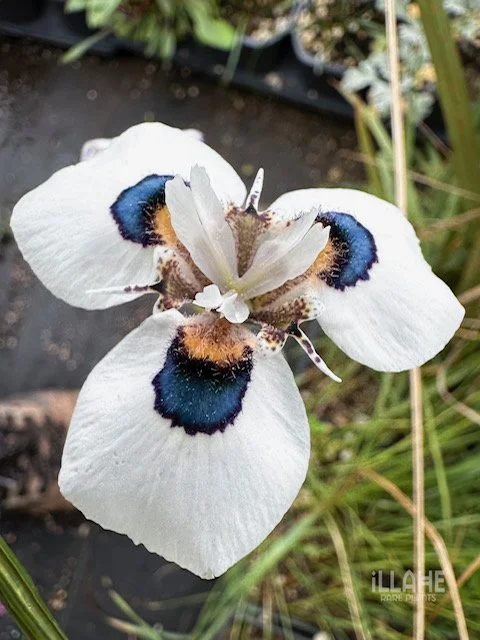
Moraea vespertina
A rare evening-flowering species from South Africa’s Cape Floristic Region
This delicate and unusual member of the iris family is native to the winter-rainfall regions of the Western Cape, South Africa, where it grows in sandy, well-drained soils among low fynbos vegetation. True to its name, Moraea vespertina opens its pale lilac to violet flowers in the late afternoon or evening—often releasing a sweet scent to attract nocturnal pollinators. The blooms are short-lived, usually lasting just a single night, but the plant produces multiple flowers in succession over several weeks in spring. I grew a ton of Moraea from seed and this is the first year I have some to offer, expect variability as all of these are seed grown from numerous sources over many years.
Best suited to cultivation in a Mediterranean-style climate or a frost-free alpine house, M. vespertina thrives in deep pots or well-drained rock garden beds with minimal summer water. It requires a dry dormancy during the summer months and will rot if overwatered out of season.
Hardy only to light frost (around USDA Zone 9–10), this species benefits from protection in colder regions. With its unusual flowering behavior and charming appearance, Moraea vespertina is a fascinating addition for collectors of geophytes and South African bulbs.
A rare evening-flowering species from South Africa’s Cape Floristic Region
This delicate and unusual member of the iris family is native to the winter-rainfall regions of the Western Cape, South Africa, where it grows in sandy, well-drained soils among low fynbos vegetation. True to its name, Moraea vespertina opens its pale lilac to violet flowers in the late afternoon or evening—often releasing a sweet scent to attract nocturnal pollinators. The blooms are short-lived, usually lasting just a single night, but the plant produces multiple flowers in succession over several weeks in spring. I grew a ton of Moraea from seed and this is the first year I have some to offer, expect variability as all of these are seed grown from numerous sources over many years.
Best suited to cultivation in a Mediterranean-style climate or a frost-free alpine house, M. vespertina thrives in deep pots or well-drained rock garden beds with minimal summer water. It requires a dry dormancy during the summer months and will rot if overwatered out of season.
Hardy only to light frost (around USDA Zone 9–10), this species benefits from protection in colder regions. With its unusual flowering behavior and charming appearance, Moraea vespertina is a fascinating addition for collectors of geophytes and South African bulbs.






